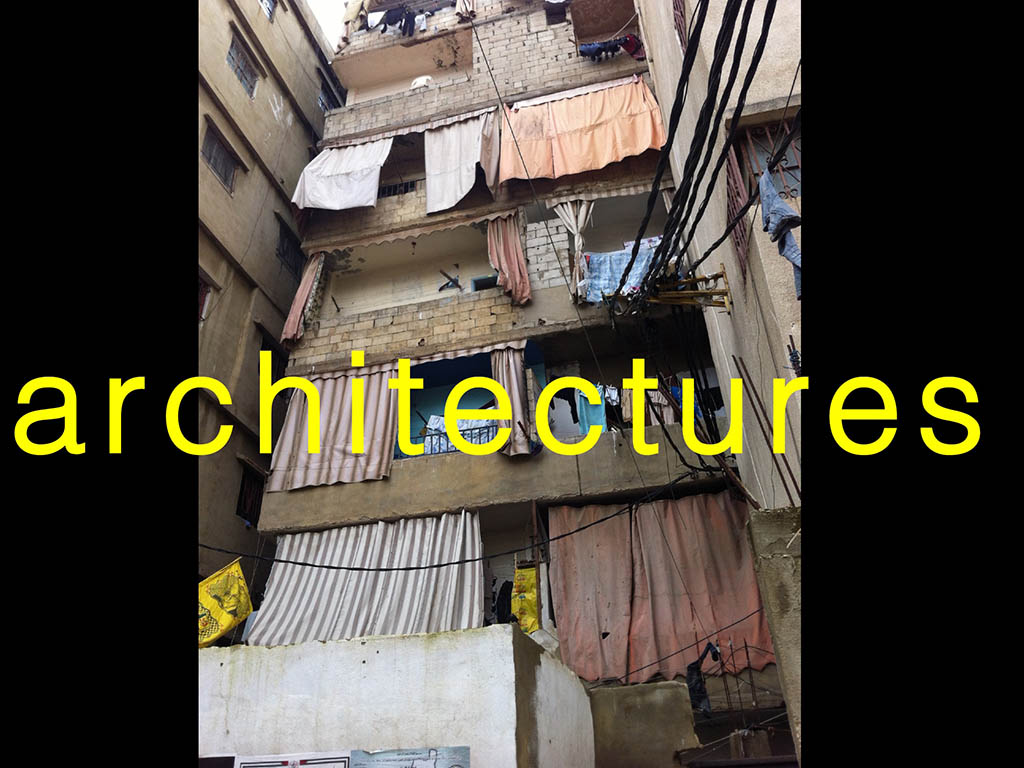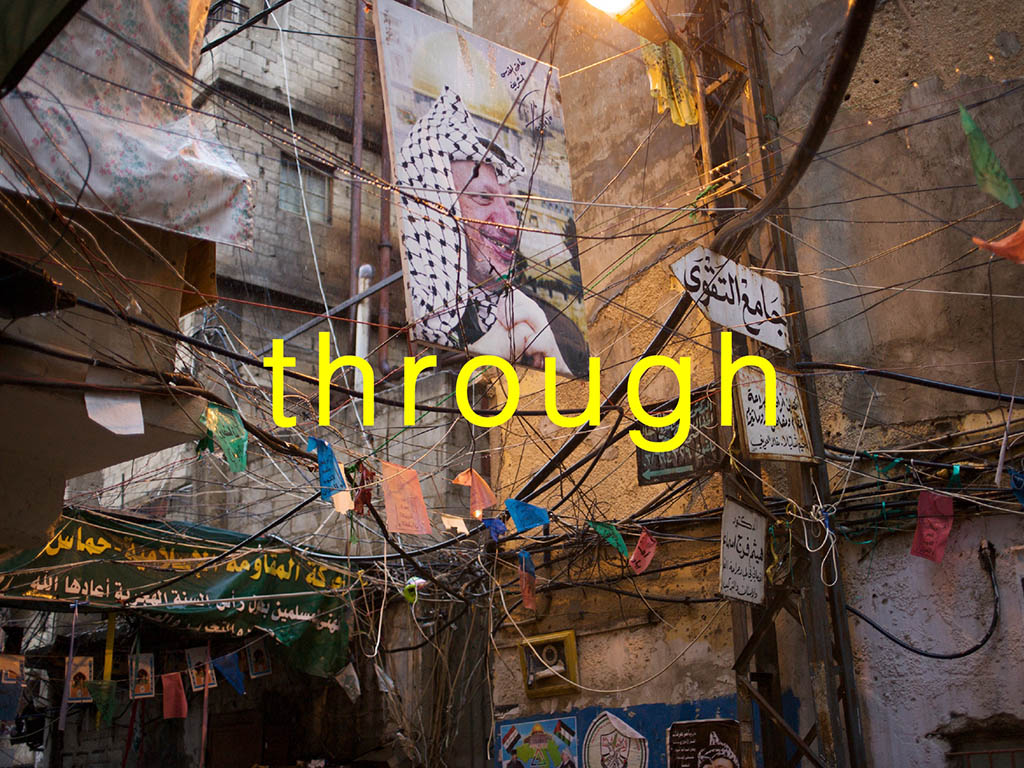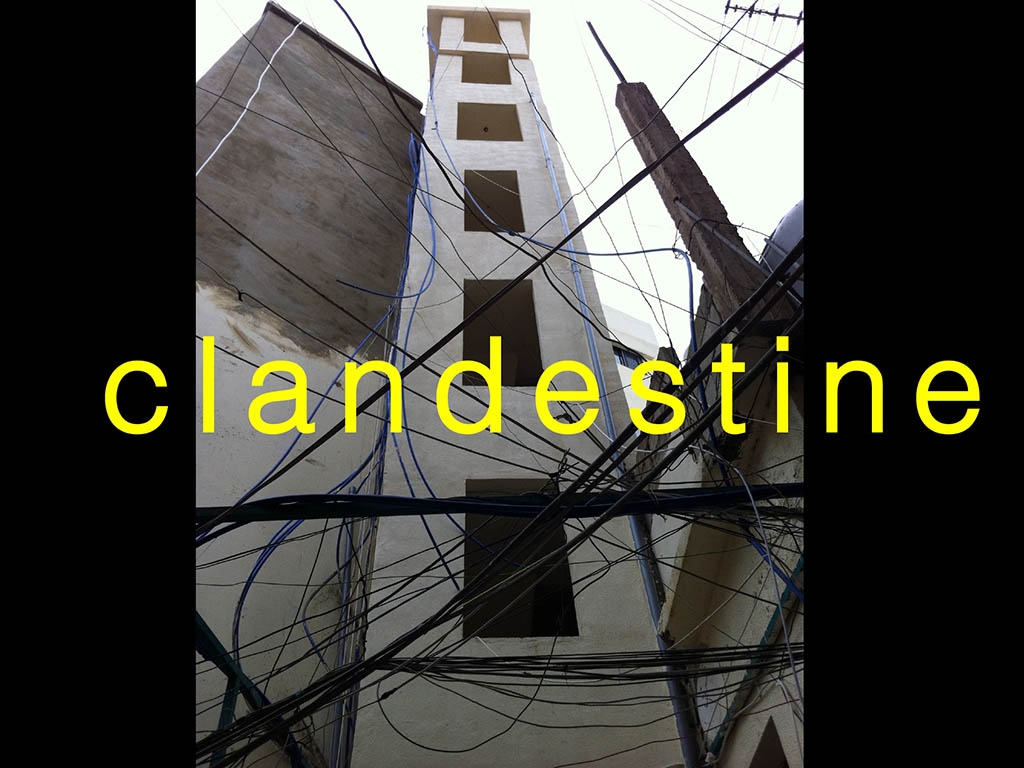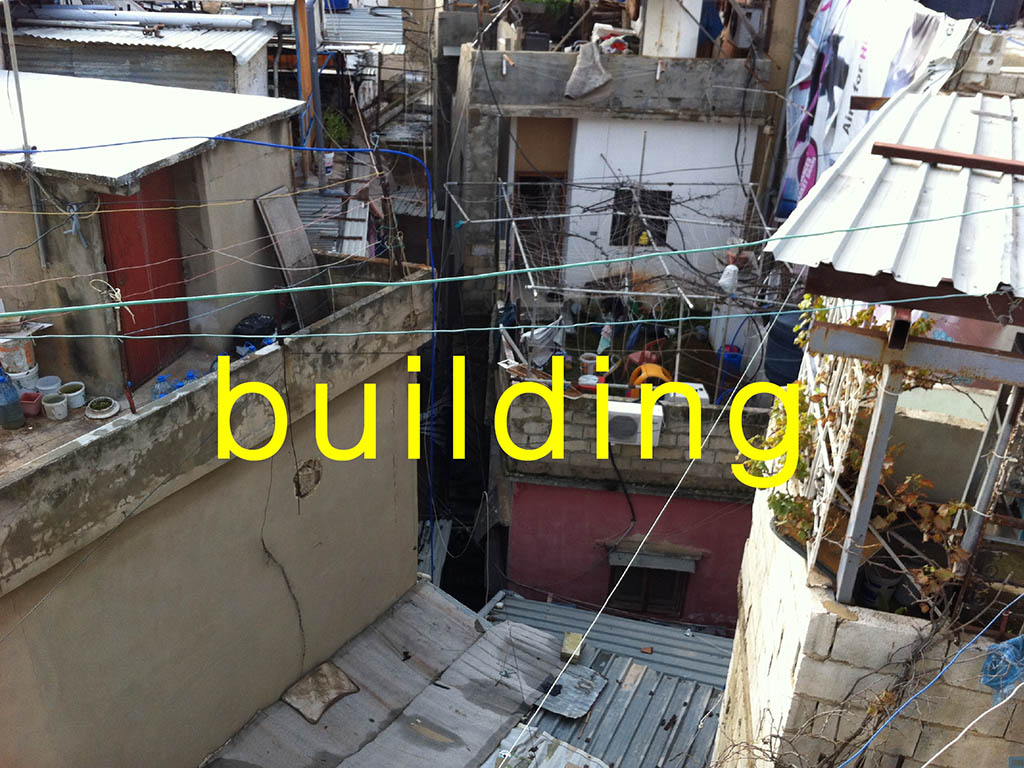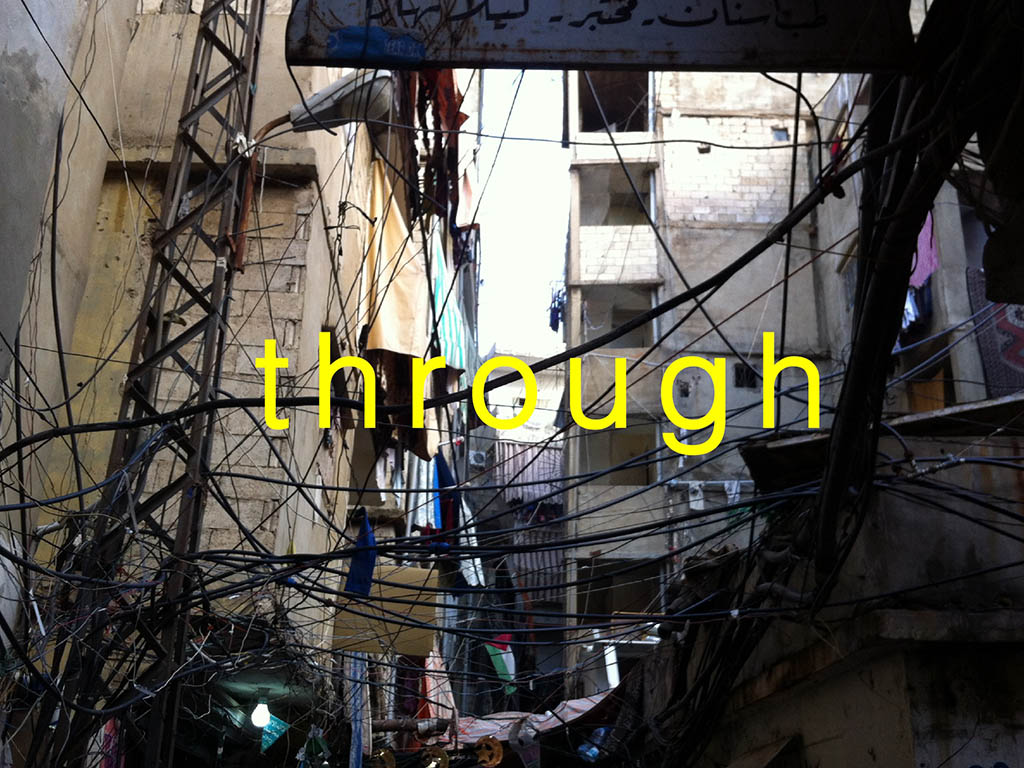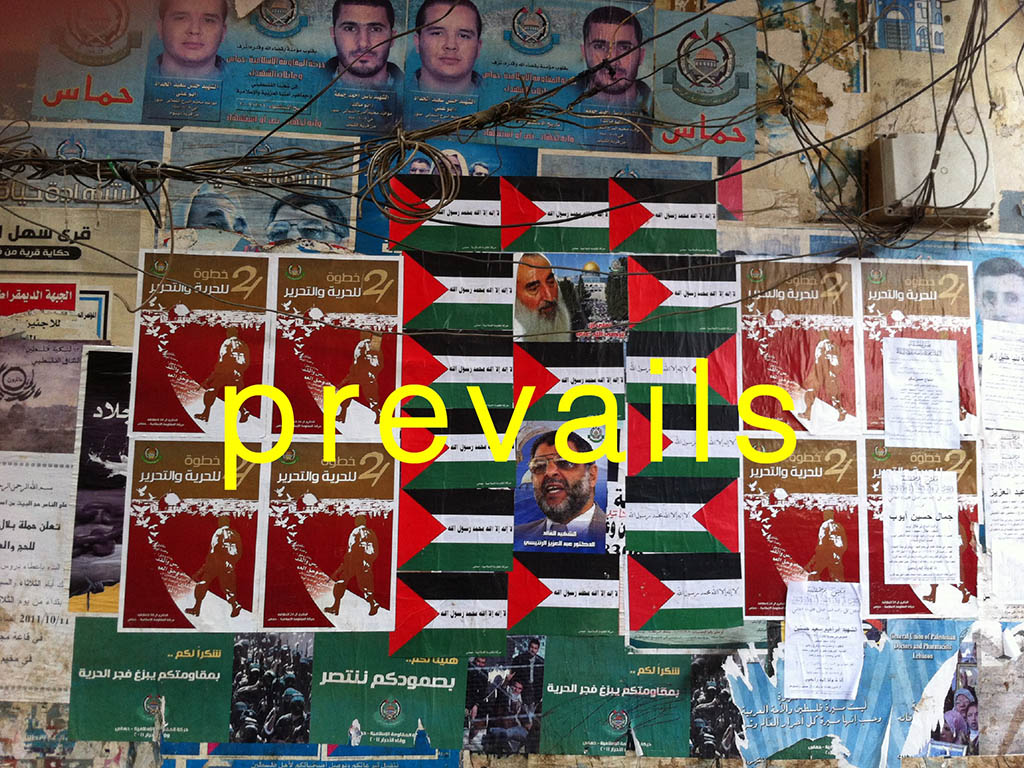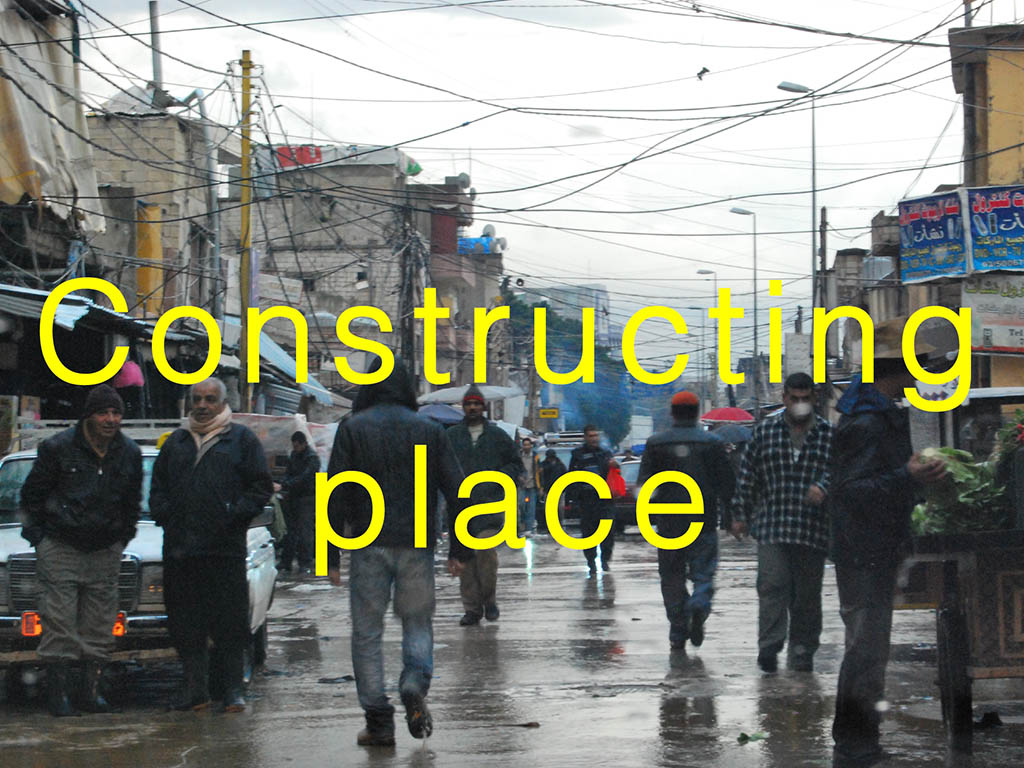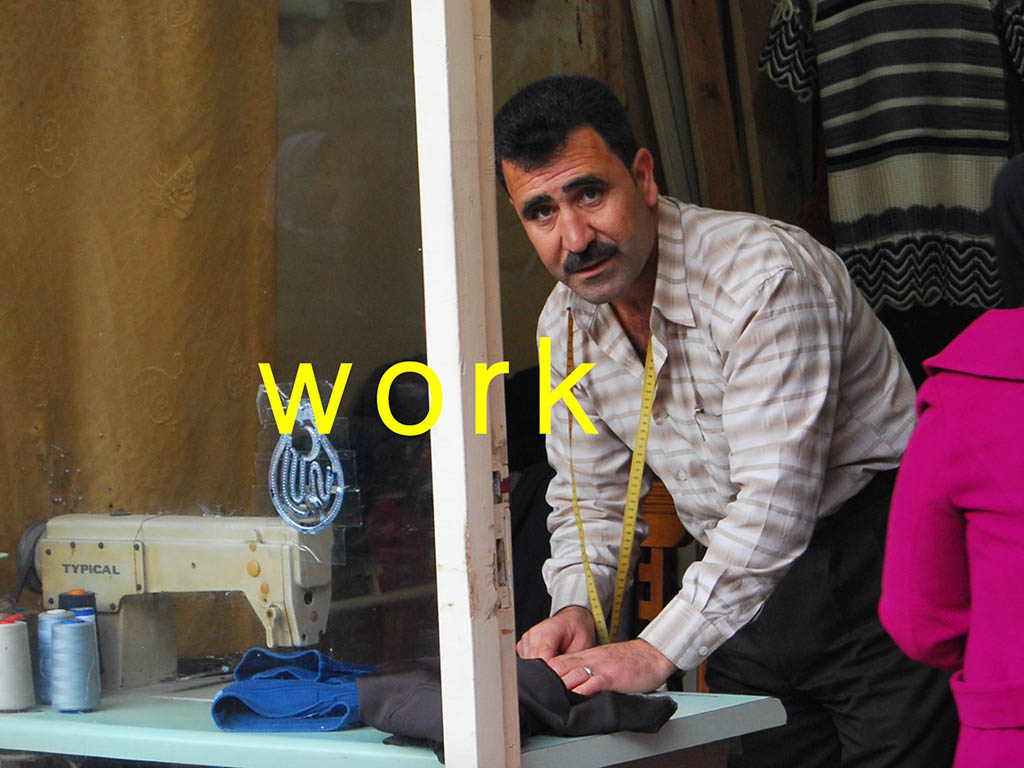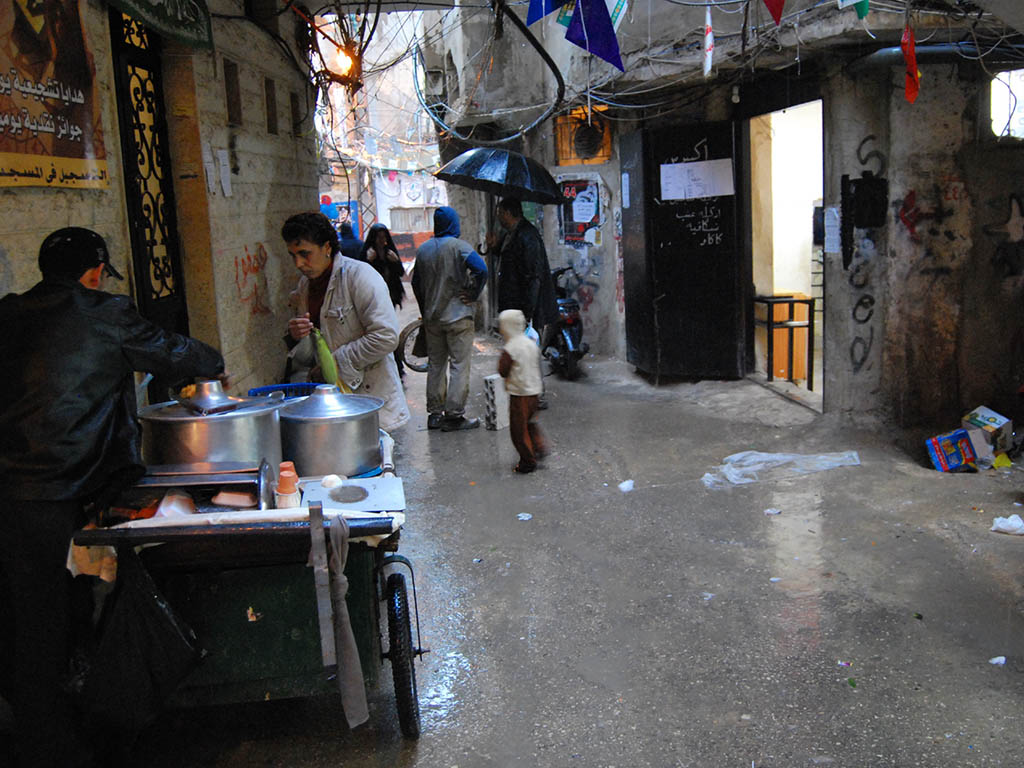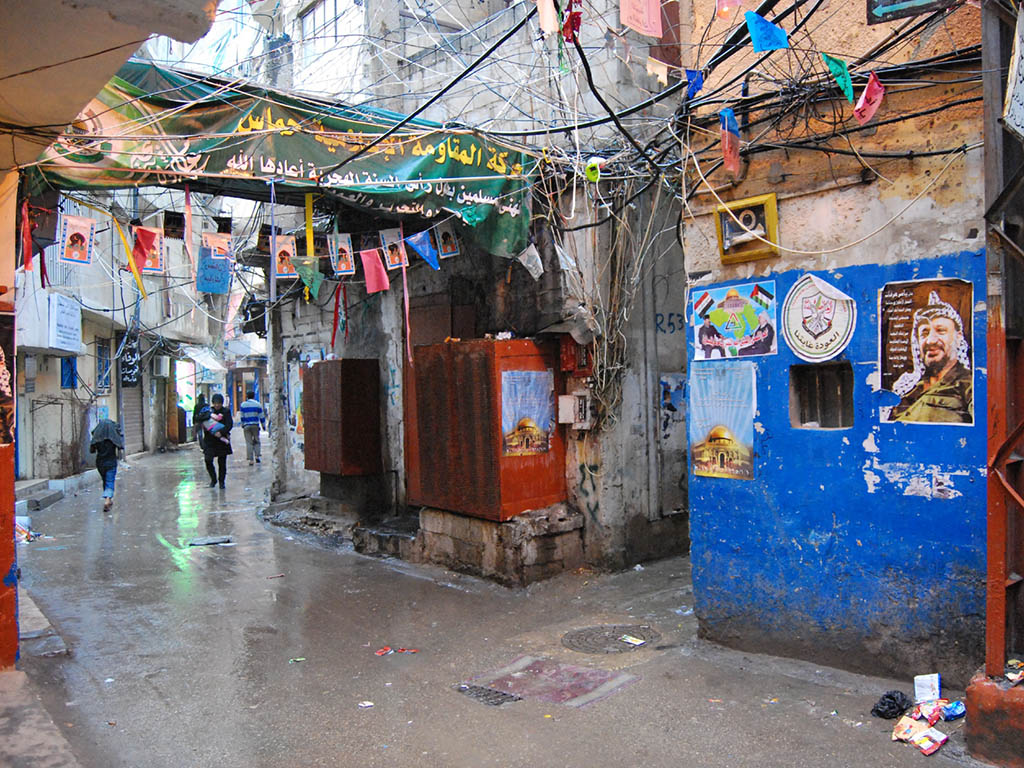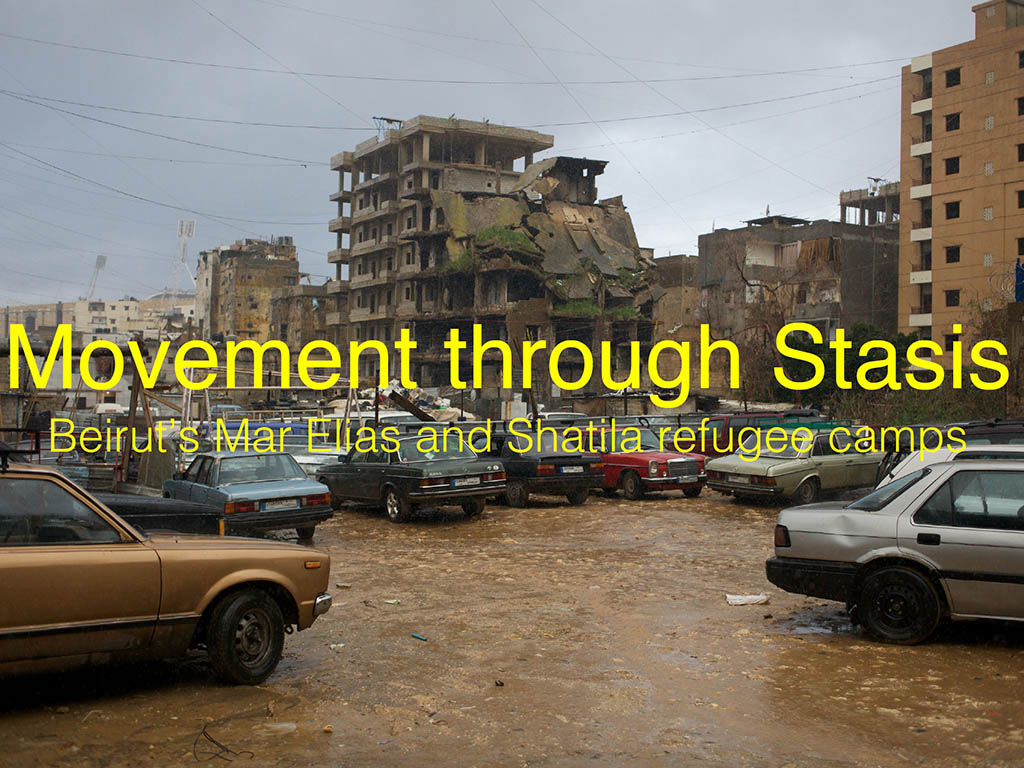Movement through Stasis
Movement through Stasis: Beirut’s Mar Elias and Shatila refugee camps
University of Wroclaw
Poland
2015
The Palestinian refugee camps in Beirut, Lebanon, are an exemplar of movement, albeit covert by a people bounded within spaces exerting stasis. Covert for the fact of their furtive communications with the outside world and stasis for the fact of their forced repudiation for permanent settlement and legal representation. Expelled from their lands following the 1948 Palestinian-Israeli War of Independence or Nakba and later, the 1970 Jordanian-PLO conflict, Palestinian refugees including former leader Yasser Arafat, have crossed the border of adjoining Lebanon to resettle in refugee camps set-up in Tripoli and Beirut. Denied the opportunity to establish businesses, acquire land or register as doctors, lawyers and engineers has brought severe limitations to the labour, economic and political mobility of the approximately 400,000 Palestinians living in Lebanon.
During a teaching engagement at the Lebanese American University, I was able to visit two of Beirut’s refugee camps at Sabra and Shatila. The larger of the two camps Shatila, houses 22,000 Palestinians on a site designed to house 8,000. Bounded within a defined area, the residents of Shatila have resorted to clandestine building operations where the only possibility is to build upwards. Below, within the narrow laneways, hundreds of electricity and internet cables fill the overhead space, creating a false ceiling of conducted communications and power. Yet within the stasis of their camp and accompanying limited opportunities for self-determination, the residents of Shatila exercise movement through adaptions and appropriations of the material and the immaterial.
Focusing not on the relationships in what is generally perceived in guiding movement; established engagements between body and ground, spaces and places, the paper will instead propose that the long term refugees of Sabra and Shatila substitute their movements by engaging with materials and building, creating their internal urbanity and governance and externally, their communication beyond their walled environments with the outside world. In regards to the refugees of Sabra and Shatila, movement will be discussed not as one foot after the other that first brought them to Lebanon to escape war and violence, rather it will be explored within the walled boundaries in which they dwell.
